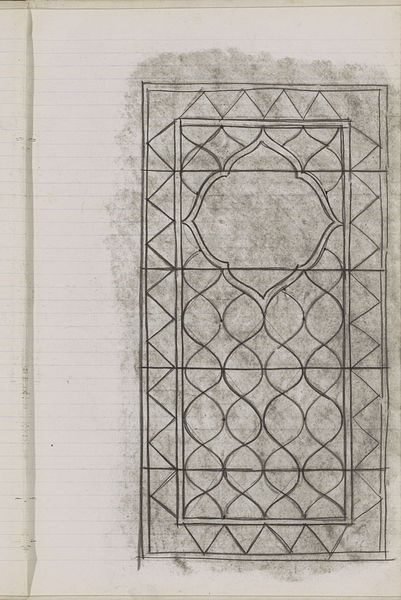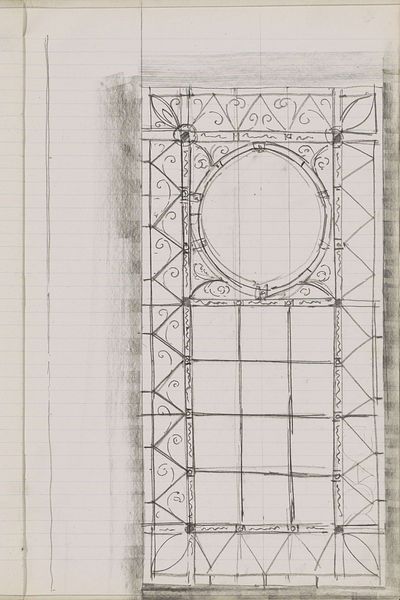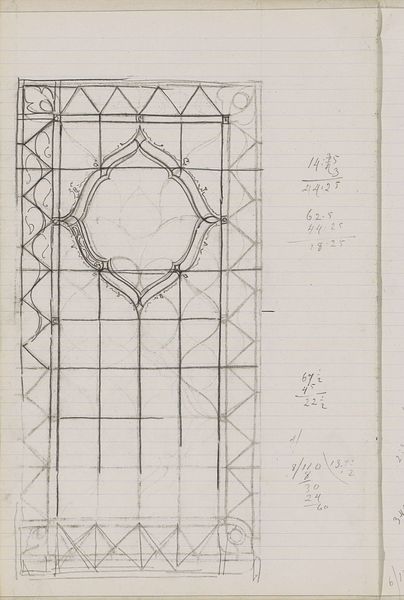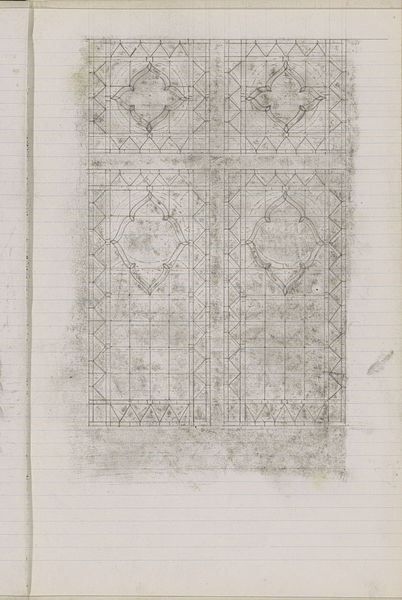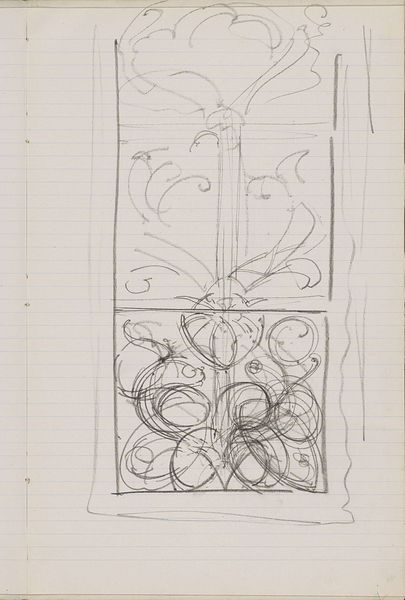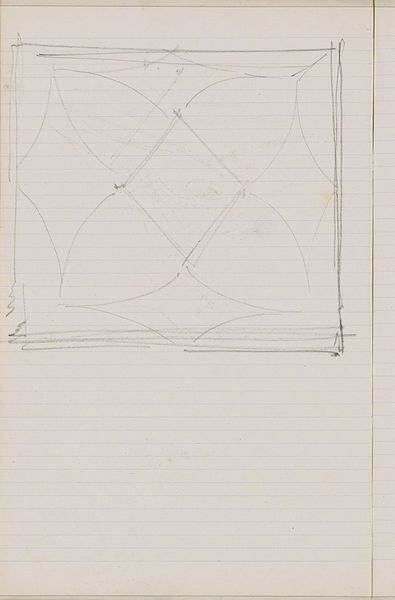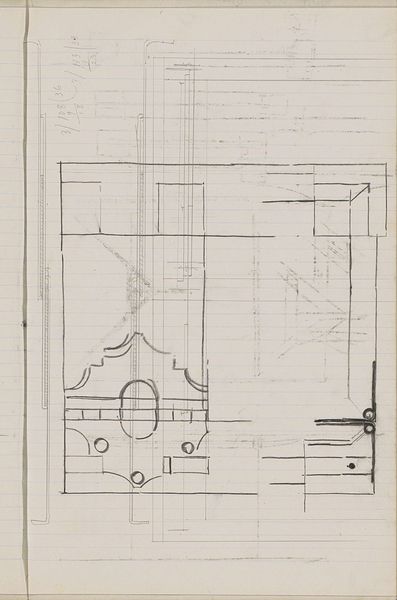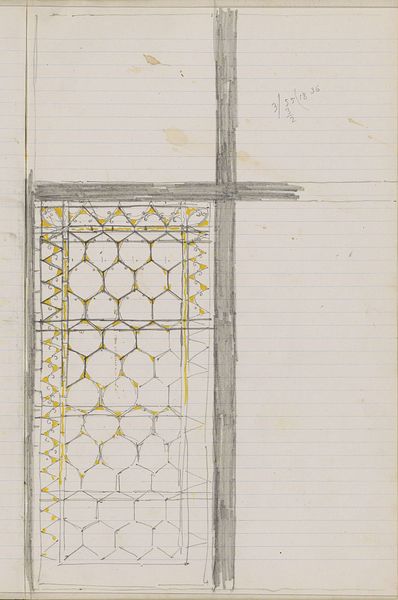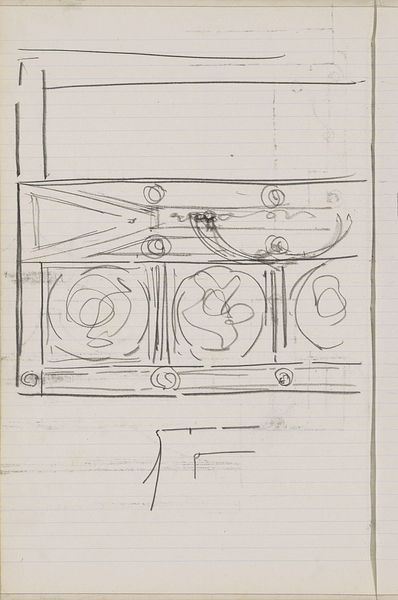
drawing, paper, pencil, architecture
#
drawing
#
art-nouveau
#
paper
#
geometric
#
pencil
#
architecture
Copyright: Rijks Museum: Open Domain
Editor: We are looking at Gerrit Willem Dijsselhof's "Design for a Stained-Glass Window," circa 1901. It’s a pencil drawing on paper, currently held in the Rijksmuseum. It has a kind of serene quality to it despite the strict geometry. How do you interpret this work? Curator: The power of this piece, for me, lies in its interplay of geometric precision and organic fluidity, characteristic of Art Nouveau. The underlying grid provides structure, but Dijsselhof counterpoints this with curvilinear forms. Observe how the interlocking circles create a subtle rhythm. Do you notice any other ways that rhythm is established? Editor: Yes, the triangles along the border also contribute, contrasting with the rounded forms. It feels carefully balanced. Curator: Precisely. It’s this visual balance, a tension between opposing forces, that lends the work its dynamic quality. Consider the medium too: pencil on paper. The varying pressure creates a nuanced range of tones. Editor: The contrast reminds me of a push and pull between nature and industry… like the design itself. It also reminds me of Mondrian, who used lines to create his compositions. Curator: A perceptive observation. Before the radical abstractions of Mondrian, Art Nouveau artists like Dijsselhof were exploring simplified forms drawn from the natural world, evident in his careful consideration of lines and shapes, divorced from symbolic meanings. It is about structure, composition and visual relationships on the flat plane. The pencil markings allow for easy transfer of geometric information when the glass design is realized in architecture. Editor: So it’s less about the stained glass and more about what that medium lets us create as a physical object… almost as sculpture! It definitely provides an appreciation for structure in stained glass. Thanks! Curator: It exemplifies the reduction of forms to pure geometries that characterized Dijsselhof’s works. The design is a testament to the beauty inherent in these foundational artistic decisions.
Comments
No comments
Be the first to comment and join the conversation on the ultimate creative platform.
